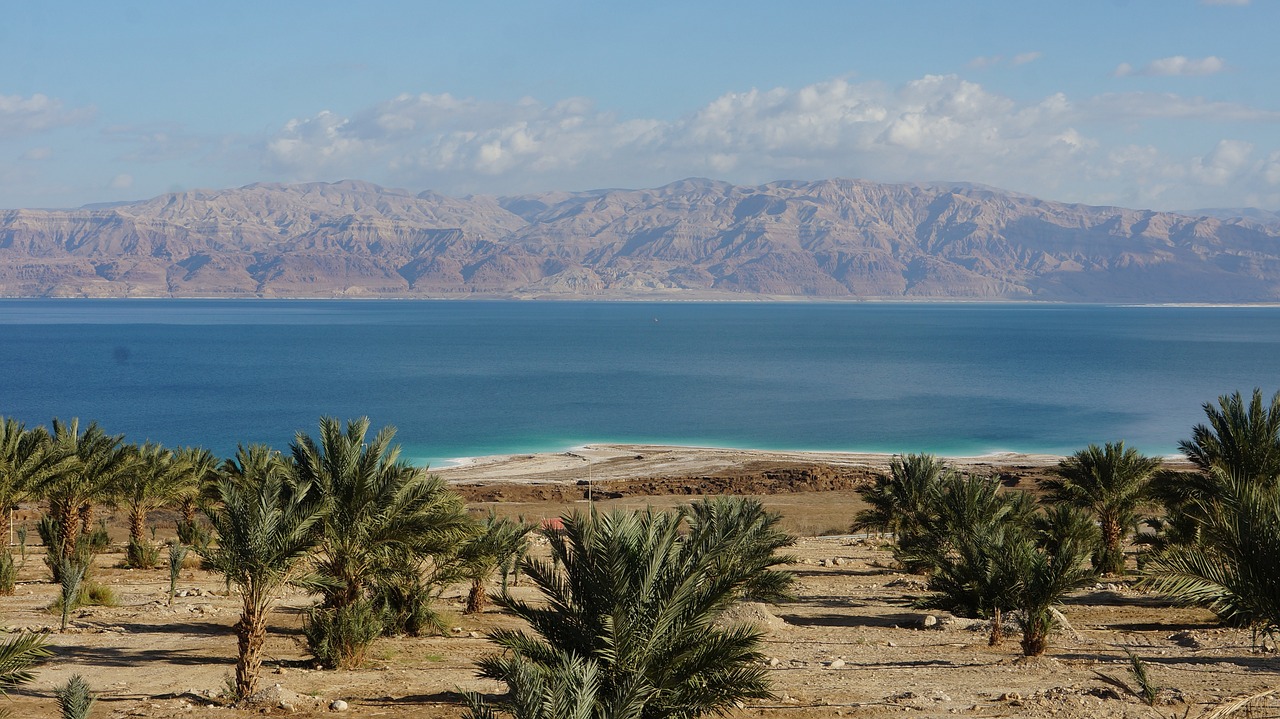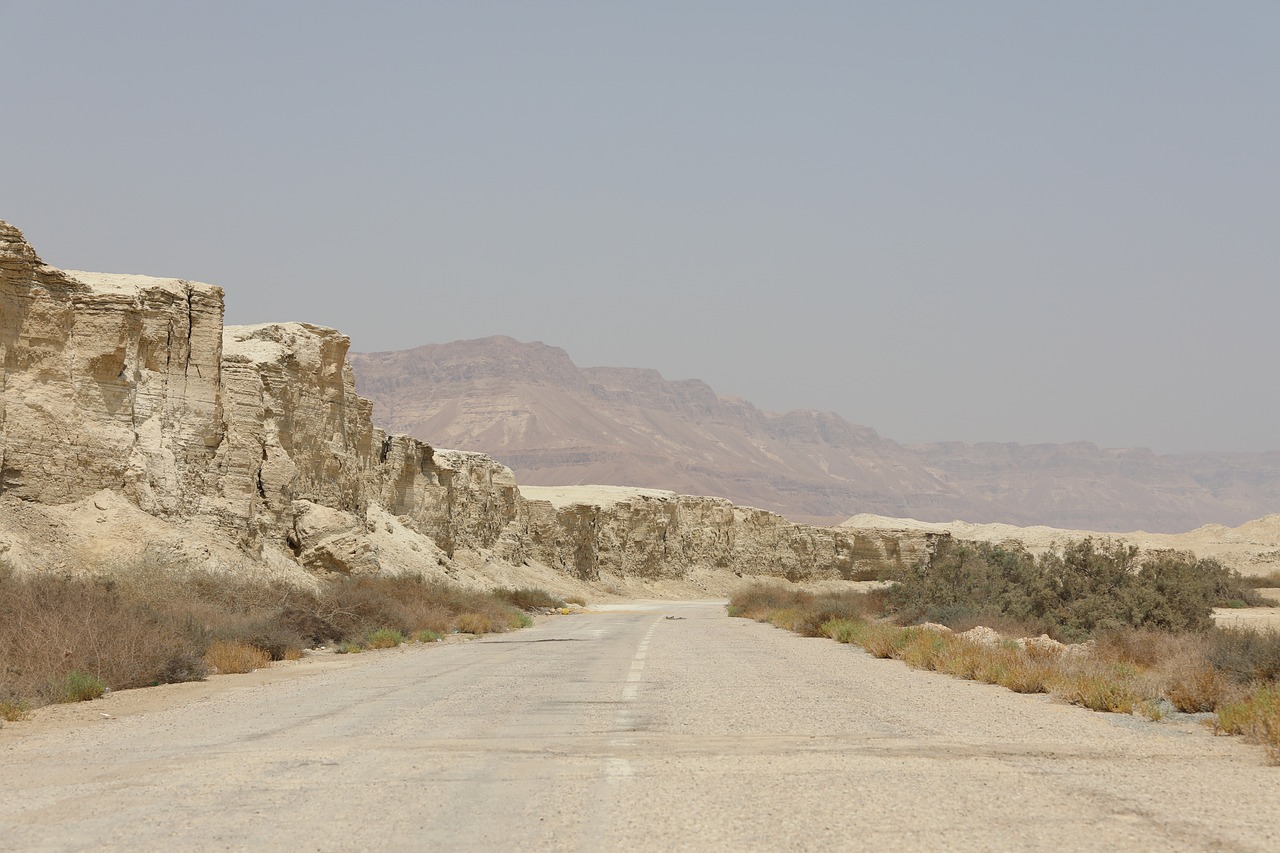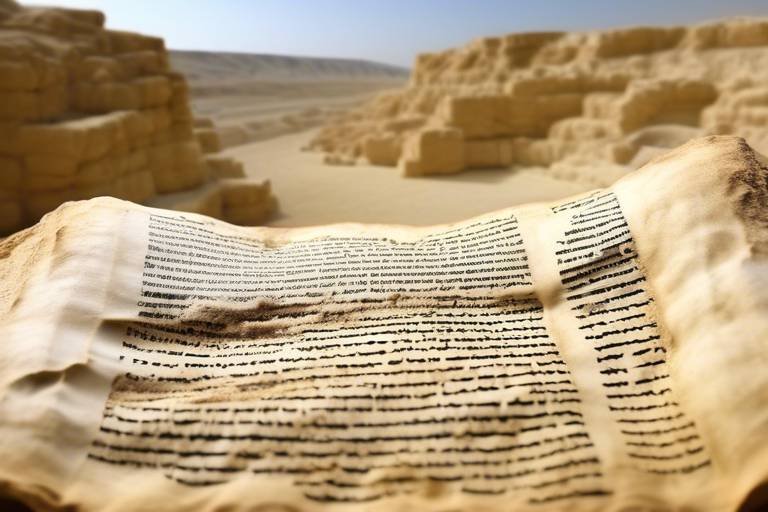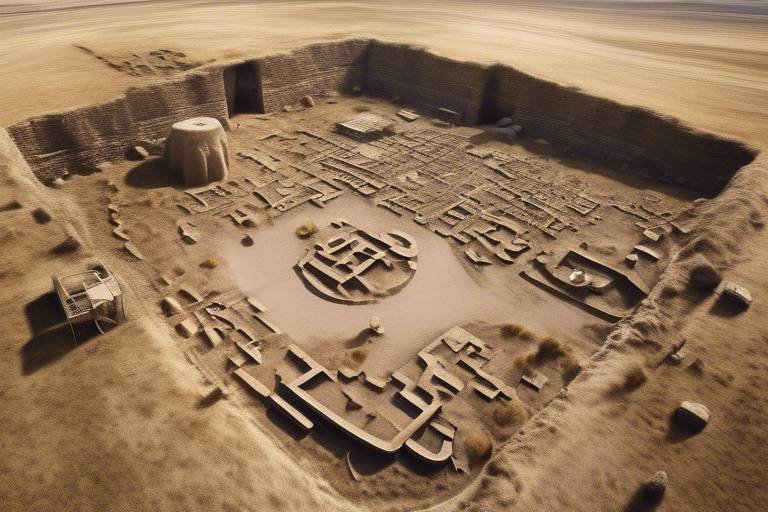The Importance of the Dead Sea Scrolls in Biblical Archaeology
The Dead Sea Scrolls hold a paramount significance in the realm of Biblical archaeology, acting as a key to unlocking the mysteries of ancient Biblical texts and shedding light on the historical context in which they were written. These ancient manuscripts have revolutionized our understanding of religious history and continue to captivate scholars and researchers with their profound insights.

Discovery and Significance
Exploring the significance of the Dead Sea Scrolls in shedding light on ancient Biblical texts and the impact on archaeological research and understanding of religious history.
The discovery of the Dead Sea Scrolls is a tale of intrigue and fascination that has captivated scholars and enthusiasts alike. In the mid-20th century, a young Bedouin shepherd stumbled upon a series of ancient manuscripts hidden in caves near the Dead Sea. Little did he know that this chance discovery would unlock a treasure trove of knowledge about the ancient world.
These scrolls, dating back over two millennia, have proven to be invaluable in providing insights into the religious beliefs and practices of the Jewish community during the Second Temple period. They offer a unique glimpse into a time when Judaism was still evolving and shaping its identity.
The significance of the Dead Sea Scrolls cannot be overstated. They have revolutionized our understanding of ancient Biblical texts, shedding new light on familiar stories and revealing previously unknown details. By comparing these texts to later versions, scholars have been able to trace the evolution of religious thought and practice over time.

Historical Context
Exploring the significance of the Dead Sea Scrolls in shedding light on ancient Biblical texts and the impact on archaeological research and understanding of religious history.
The historical context surrounding the Dead Sea Scrolls is a tapestry woven with threads of mystery and revelation. Discovered between 1947 and 1956 in the caves of Qumran near the Dead Sea, these ancient manuscripts have provided a window into the religious and cultural landscape of the ancient Near East. Imagine stumbling upon a hidden treasure trove that unlocks secrets from centuries past, offering a glimpse into the beliefs and practices of a bygone era.

Textual Analysis
Textual analysis of the Dead Sea Scrolls is a fascinating journey into the ancient world, offering a glimpse into the religious beliefs and practices of the time. These ancient manuscripts, dating back over two millennia, contain a wealth of information that has revolutionized our understanding of Biblical texts and early religious writings. Through meticulous examination and comparison with other ancient texts, scholars have been able to decipher the meaning and significance of the Dead Sea Scrolls.
One of the most striking aspects of the textual analysis is the remarkable level of preservation of the Dead Sea Scrolls. Despite their age, these manuscripts have survived in remarkably good condition, allowing researchers to study the intricate details of the text. The content of the scrolls covers a wide range of topics, including religious rituals, apocalyptic visions, and communal practices, providing a comprehensive view of the religious landscape of the ancient world.
Comparative studies have played a crucial role in unraveling the mysteries of the Dead Sea Scrolls. By analyzing the similarities and differences between these manuscripts and other ancient texts, scholars have been able to trace the evolution of religious ideas and practices over time. The insights gained from these comparative studies have shed light on the diverse religious traditions that existed in the ancient Near East.
Moreover, the authorship and dating of the Dead Sea Scrolls have been subjects of intense scrutiny and debate among researchers. Determining the origins of these manuscripts and establishing their historical context are essential steps in understanding their significance. Through advanced dating techniques and meticulous analysis of the handwriting and linguistic styles, scholars have been able to place the Dead Sea Scrolls within the broader historical framework of the ancient world.
In conclusion, the textual analysis of the Dead Sea Scrolls continues to be a vibrant field of research, offering new insights and discoveries that enrich our understanding of ancient history and religious practices. The meticulous examination of these ancient manuscripts has unlocked a treasure trove of knowledge that continues to captivate scholars and enthusiasts alike.

Authorship and Dating
Authorship and dating of the Dead Sea Scrolls are key aspects that scholars have been meticulously studying to unravel the mysteries surrounding these ancient texts. The scrolls are believed to have been written by a community of Jewish sectarians known as the Essenes, who lived in the region of Qumran during the Second Temple period. Through carbon dating and paleographic analysis, researchers have dated the scrolls to be around 2,000 years old, shedding light on the time they were penned.
One of the most intriguing elements of the Dead Sea Scrolls is the diversity of authors and scribes involved in their creation. While some scrolls are attributed to specific authors, many remain anonymous, adding an air of mystery to their origins. The meticulous dating process has revealed a timeline ranging from the 3rd century BCE to the 1st century CE, aligning with the period of the Second Temple in Jerusalem.
Moreover, the Dead Sea Scrolls offer a unique opportunity to delve into the religious and cultural milieu of ancient Judaism. By examining the writing styles, language variations, and theological perspectives present in the scrolls, researchers can piece together a more comprehensive understanding of the beliefs and practices of the Jewish community at that time. This insight into authorship and dating not only enriches our knowledge of the past but also provides a deeper connection to the religious heritage of the region.

Comparative Studies
When delving into the realm of regarding the Dead Sea Scrolls, we embark on a journey of connecting the dots between these ancient texts and other historical manuscripts from various cultures and time periods. By juxtaposing the content, language, and themes of the Dead Sea Scrolls with other religious and non-religious writings of antiquity, researchers can uncover intriguing parallels and distinctions that shed light on the broader tapestry of human history.
Through , scholars can draw parallels between the Dead Sea Scrolls and texts such as the Hebrew Bible, the New Testament, and other ancient religious manuscripts like the Nag Hammadi library. These comparisons not only reveal similarities in religious beliefs, practices, and narratives but also highlight the unique perspectives and interpretations present in the Dead Sea Scrolls that contribute to a more nuanced understanding of ancient religious thought.
Moreover, by examining the linguistic features, writing styles, and theological motifs present in the Dead Sea Scrolls alongside other ancient writings, researchers can discern patterns of influence, cultural exchanges, and theological developments that have shaped the religious landscape of the ancient world. The process of thus serves as a bridge between different historical periods and civilizations, offering valuable insights into the shared heritage and diverse expressions of human spirituality.

Conservation and Preservation
The conservation and preservation of the Dead Sea Scrolls are paramount in ensuring the survival of these invaluable ancient documents for future generations. These delicate scrolls, dating back over two millennia, require meticulous care and attention to prevent deterioration and damage. Conservation efforts involve a delicate balance between protecting the scrolls from environmental factors such as light, humidity, and temperature fluctuations while also making them accessible for scholarly research.
Specialized techniques and technologies are employed in the preservation of the Dead Sea Scrolls, including climate-controlled storage facilities and advanced imaging methods to digitally capture and analyze the text without physically touching the fragile parchment. Conservationists work tirelessly to stabilize the scrolls and prevent further degradation, employing methods that are both effective and non-invasive to ensure the long-term survival of these ancient treasures.
One of the main challenges in the conservation of the Dead Sea Scrolls is the fragility of the materials used in their creation. The parchment on which the texts are written is extremely sensitive to light, humidity, and fluctuations in temperature, making it susceptible to deterioration over time. Conservationists must carefully monitor and control the storage conditions to prevent damage and ensure the longevity of the scrolls.
Efforts to preserve the Dead Sea Scrolls also involve ongoing research into innovative conservation techniques and materials that can help protect these ancient documents for centuries to come. Collaborative efforts between archaeologists, conservators, and scientists are essential in developing sustainable preservation strategies that balance the need for access to the scrolls with the imperative of safeguarding their integrity and authenticity.

Modern Relevance
Exploring the significance of the Dead Sea Scrolls in shedding light on ancient Biblical texts and the impact on archaeological research and understanding of religious history.
When we consider the modern relevance of the Dead Sea Scrolls, it is fascinating to see how these ancient manuscripts continue to influence contemporary Biblical scholarship. The insights gained from the study of the Dead Sea Scrolls have not only deepened our understanding of ancient religious practices but have also sparked debates and discussions in the field of religious studies.
One of the key aspects of the modern relevance of the Dead Sea Scrolls lies in their role in validating the authenticity of Biblical texts. By providing alternative versions of certain Biblical passages and shedding light on variations in religious beliefs during ancient times, the Dead Sea Scrolls have forced scholars to reevaluate traditional interpretations and consider new perspectives.
Moreover, the Dead Sea Scrolls serve as a bridge between the past and the present, connecting us to the religious practices and beliefs of ancient communities. They offer a glimpse into the diverse religious landscape of the ancient Near East, highlighting the rich tapestry of beliefs and traditions that existed during that time.
Furthermore, the ongoing impact of the Dead Sea Scrolls on archaeological research cannot be understated. As new technologies and research methods continue to evolve, scholars are able to extract even more information from these ancient texts, leading to further discoveries and insights into the religious and cultural practices of the past.
In essence, the modern relevance of the Dead Sea Scrolls lies in their ability to challenge our preconceived notions, stimulate scholarly debate, and provide a window into the ancient world that continues to shape our understanding of religious history.

Future Research Directions
As we gaze into the future of research on the Dead Sea Scrolls, the possibilities are as vast as the desert from which these ancient texts emerged. Scholars and archaeologists are continuously pushing the boundaries of knowledge, seeking to unveil more mysteries hidden within these fragile scrolls. One direction for future research lies in the exploration of the connections between the Dead Sea Scrolls and other ancient texts from the same time period. By comparing and contrasting these texts, researchers can gain a deeper understanding of the cultural and religious milieu of the ancient world.
Furthermore, advancements in technology offer exciting prospects for the study of the Dead Sea Scrolls. High-resolution imaging techniques, such as multispectral imaging and 3D scanning, can reveal hidden details in the scrolls that were previously inaccessible. These technological innovations open up new avenues for analysis and interpretation, allowing researchers to delve even deeper into the secrets held within these ancient manuscripts.
Another promising area for future research involves the exploration of the social and historical context in which the Dead Sea Scrolls were produced. By examining the archaeological sites near where the scrolls were discovered and studying the material culture of the time, scholars can paint a more comprehensive picture of the communities that created and preserved these texts. This holistic approach to research can provide valuable insights into the beliefs, practices, and daily lives of the ancient people who inhabited the region.
Moreover, interdisciplinary collaboration between experts in fields such as archaeology, linguistics, history, and religious studies is essential for advancing our understanding of the Dead Sea Scrolls. By bringing together diverse perspectives and methodologies, researchers can gain a more nuanced and comprehensive view of these ancient texts and their significance in the broader context of religious history.
Frequently Asked Questions
- What are the Dead Sea Scrolls?
The Dead Sea Scrolls are a collection of ancient Jewish religious texts discovered between 1947 and 1956 in the West Bank near the Dead Sea. These scrolls include biblical manuscripts, as well as other documents that provide insights into the religious beliefs and practices of the Jewish community during the Second Temple period.
- Why are the Dead Sea Scrolls important?
The Dead Sea Scrolls are crucial in biblical archaeology as they offer a glimpse into the religious and cultural milieu of ancient times. They provide valuable information about the development of religious texts, sects, and practices, shedding light on the historical context of the Bible and early Judaism.
- How do the Dead Sea Scrolls impact modern research?
The Dead Sea Scrolls continue to influence modern research by contributing to the understanding of ancient texts and religious traditions. Scholars use them to compare and analyze biblical manuscripts, enhancing our knowledge of the origins and transmission of religious writings.
- Who wrote the Dead Sea Scrolls?
The authorship of the Dead Sea Scrolls remains a topic of debate among scholars. While some scrolls are believed to have been written by the Essenes, an ancient Jewish sect, others may have originated from different groups or individuals within the community near the Dead Sea.
- What is the significance of the Dead Sea Scrolls for religious studies?
The Dead Sea Scrolls provide a unique perspective on the development of religious thought and practices in ancient Judaism. They offer insights into the diversity of beliefs and interpretations within the Jewish community, enriching our understanding of the religious landscape of the time.



















